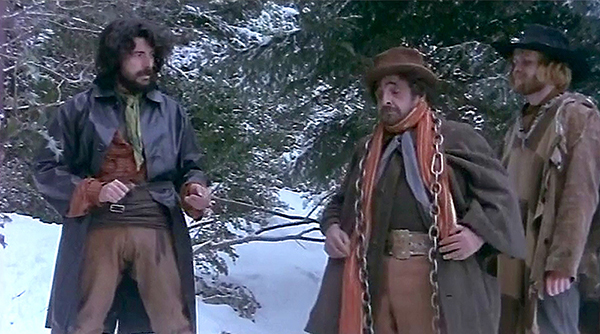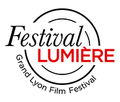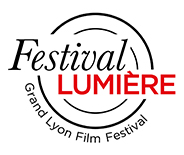She has seen all the films…
PUBLISHED ON 15.10.2022
Behind the rich and varied content of the Lumière Film Festival 2022, there is Maelle Arnaud, a discerning programmer who pays close attention to archives from around the world. She gives us her insight into this new edition.
When do you start preparing the Lumière Film Festival?
We like to think about it all year long: we are in a way on the lookout for ideas that come to us, for restorations that we hear about, etc. But it's also good to take a break after each edition. A break that is also linked to the permanent activity of the Institute, which is the heart of our mission. The festival's programme starts in the spring, but some ideas come from further back. For example, we have been discussing with the Hungarian archives for more than two years about the films André de Toth made before he left for Hollywood. We have agreed on a date by which the restoration of these films will be completed.
Every year, archives from all over the world propose films for the Lumière Classics section, which gives us an overview of restorations across the globe. For example, last year, the Swedish archives proposed a film by Mai Zetterling, but the selection was closed. We thought it wise to wait until the following year, when they were working on other restorations. Exchanges also take place throughout the year at classic film festivals such as Bologna, and the International Federation of Film Archives has a regular newsletter where archives indicate that they are looking for material for a certain a restoration, and this allows us to have information in advance.
Are some archives more active than others?
It all depends on the funding. For example, the Hungarian archives recuperated funds after showing the importance of their presence at the Lumière Film Festival. They were even able to create a festival of restored films in Budapest and this type of event is on the rise. This is an example of the virtuous circle in which we believe and which makes me very proud: an eventful showing of films leads to new restorations which will in turn be shown. This year, for the first time, we are working with the Albanian archives, which have offered us the first film in the history of local cinema, Tana, directed in 1958. Archivists will come to present the film and it will be an opportunity to discuss with them, to learn more about the work they are doing on their heritage.
Year after year, we can say that the films of Eastern European countries have been screened a lot in Lyon, and this is the result of our good relations with the Czech, Slovak and Polish archives. We like to think that the Lyon public now has a good knowledge of the history of cinema in this region of the world! It seems to me that everywhere in the world funding is being released for heritage, even if it is insufficient in some countries.
 Cut-Throats Nine, 1972
Cut-Throats Nine, 1972
Is this related to potential new audiovisual outlets, for example platforms?
Partially. But the biggest factor is the visibility offered by heritage festivals, first and foremost by the Lumière Film Festival. After that, there may be one-off deals with distributors or platforms: like when the films of Chabrol or Truffaut end up on Netflix…
What is the reasoning behind a Louis Malle retrospective?
We were thinking about our annual French cinema retrospective, and we were hesitant to stay with the period from the 1930s to the 1950s. Why not choose a more recent filmmaker? We had already done so with Claude Sautet. At this point in our thinking, the distributor Malavida informed us of their plans to re-release some of Louis Malle's films in theatres, for which Gaumont had just acquired the rights and completed the restoration. We jumped at the chance, especially since this is a filmmaker who wasn't talked about much. The reaction to the announcement of the retrospective was clear: everyone thought it was a wonderful idea. It's really a good example of optimal collaboration: a distributor offers us turnkey material and the visibility of the Lumière Film Festival will help the distributor and support the theatrical release.
You conducted a survey among under-26 year olds to better understand their cinema tastes. Is this what led to the "Cult flicks!" section of the festival?
This section is parallel to the thinking that led us to launch this survey. At the Institut Lumière, we were amazed by the responsiveness of young audiences to certain programmes, particularly American cinema. We therefore drew up a questionnaire to survey their favourite films, those they wanted to see again on the big screen, the impact of black and white, etc. The hundreds of responses that I read in their entirety were taken into account for the programming. The spectrum was wide, from Psycho, for us a "Black and White Classic", to Interstellar, which was often mentioned and which we included in the "Cult flicks!” category. It's a rather particular kind of cinephilia, based on the collective experience of the screening, enriched by exchanges on social networks, very specific to a certain type of cinema, with an exhaustive knowledge of a film, but less contextualisation than classic cinephilia.
We can also be surprised: for example, the Mizoguchi retrospective, which preceded the festival, did very well, also appealing to a young audience. It's very unusual to have the impression that each programme will be an experiment on the state of cinephilia. I am thinking for example of the Ridley Scott retrospective and the Gladiator screenings, which were a huge success. It's fantastic that young people find their way to a film library theatre to see Gladiator again on the big screen! We would also like them to come when we show Duvivier, but we want to continue to be a place where they feel welcome.
When did you get the idea for the "Permanent History of Women Filmmakers" section?
Almost from the beginning of the festival, this must be the tenth year. At the time, not many people were interested! Then #Metoo happened and the idea seemed natural. There is now an internal debate about the title, but I think it is still important to highlight the question of women's place in the history of cinema. Take Mai Zetterling, whom we are celebrating this year, her work has been forgotten, whereas at the time her films were selected for the Cannes Film Festival or Venice. When a book devotes a chapter to Swedish cinema, there is a good chance that she will not be mentioned. At the time, however, she was essential.
Archives and film libraries are becoming more and more attentive to this issue. I know that the film library of Toulouse is preparing something on Portuguese women filmmakers. When we asked the British Film Institute for Muriel Box's films, they were a little surprised and then our interest led them a little later to start restoring her films. It's great if this triggers things off, maybe in a few years we'll be showing films by this English filmmaker again in brand new restorations.
One of the festival highlights will be the screening of Charles Vanel's film Dans la nuit, which is linked to the history of the Institut. Can you tell us about it?
Charles Vanel was already one of the great stars of French silent cinema when he decided to get behind the camera. He said that he was often bored on the set as an actor and that he logically noticed that the most active person was the director. He had several film ideas in mind and set up the one he could shoot in the Ain Region, his father's homeland, in the Jujurieux quarry. The result was magnificent but when it was ready to be released, in May 1930, many theatres that had committed to showing it had just equipped themselves for talkies. They only kept this silent film on the screen for a few days. Charles Vanel, who had put all his heart into this project, decided to give up directing.
Years later, Bernard Chardère, one of the founders of the Institut Lumière, who was also from the region where the film was shot, approached Charles Vanel, who decided to donate the film rights to the Institut. The negative was in good condition and the restoration, which was entrusted to the Eclair classics laboratory, was glorious. It was one of our big projects for 2022 and the film has already been shown at the San Francisco silent film festival, during a magnificent evening in the Piazza Grande in Bologna during Cinema Ritrovato, in Spain, Poland and Hungary. We are proud to present it in Lyon and we hope to be able to screen it in French theatres.
If you had to recommend a few screenings of the festival - apart from Dans la nuit…
Difficult question! I would start with Dreyer's Ordet, simply because it is Dreyer's Ordet! Then I’d say Serpico because the discovery of Al Pacino in this character made a big impression on me and this film shows the splendour of American cinema in the 70s. And then for the enjoyment of quoting a Spanish film, Spain being the guest country of the International Classic Film Market: Cut-Throats Nine. It's a little-known film that we enjoyed discovering and that inspired Quentin Tarantino for The Hateful Eight. I like the idea of these affiliations….
Interview by Aurélien Ferenczi

